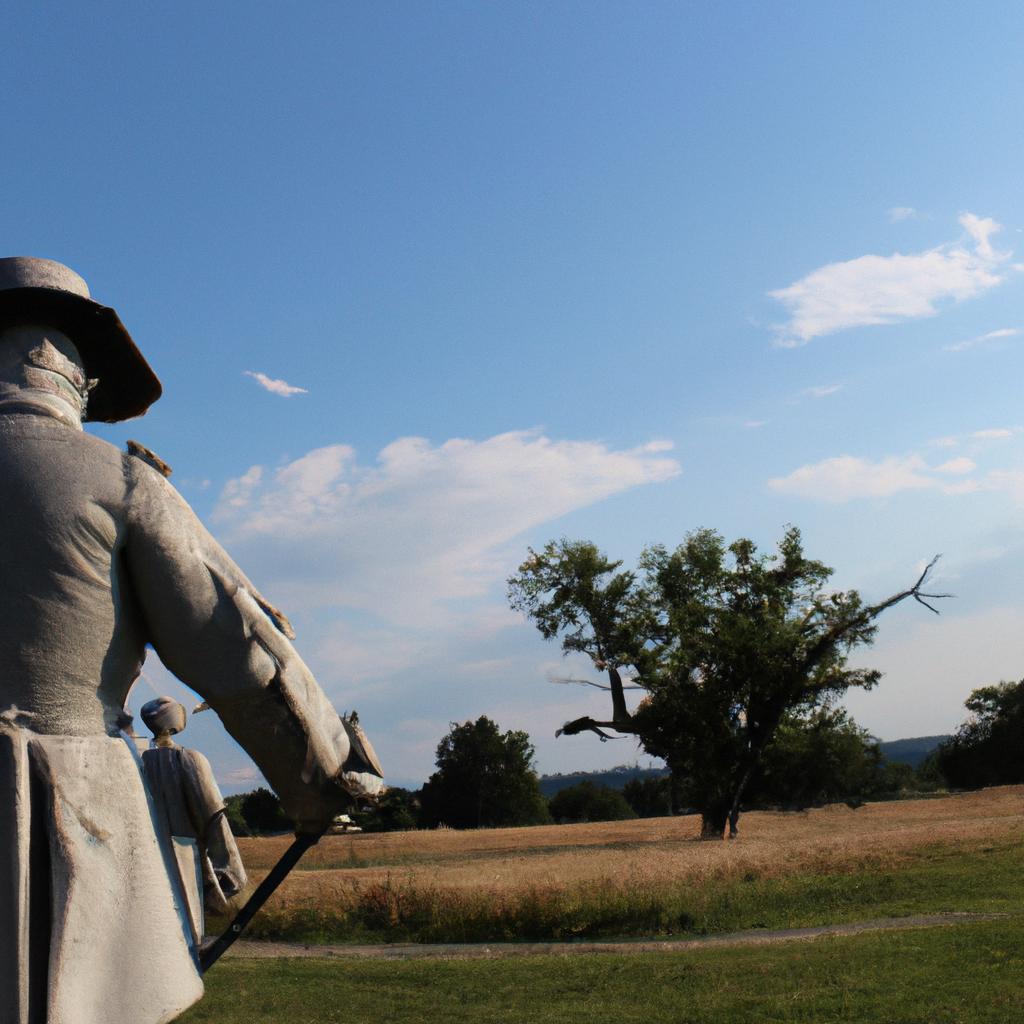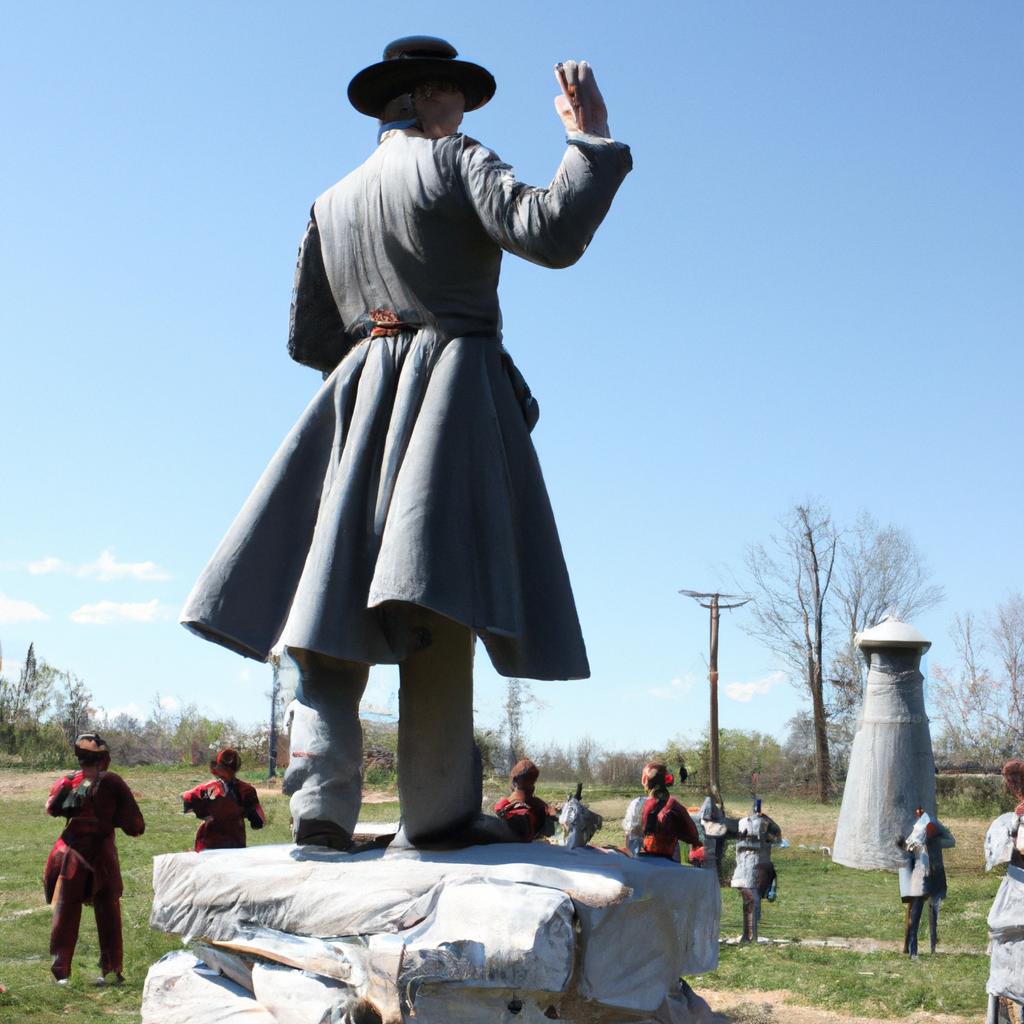
The Battle of Vicksburg: A Defining Moment in the American Civil War
The Battle of Vicksburg stands as a pivotal event in the history of the American…

The Battle of Vicksburg stands as a pivotal event in the history of the American…

The assassination of Abraham Lincoln was a pivotal event in American history, occurring during the…

The American Civil War, fought between 1861 and 1865, was a pivotal moment in the…

The American Civil War, fought from 1861 to 1865, was a defining moment in the…

The American Civil War, which took place from 1861 to 1865, was a significant turning…

The American Civil War, a pivotal event in United States history, continues to have a…

The Battle of Antietam, a pivotal event in the American Civil War, witnessed an intense…

The Battle of Chancellorsville stands as a defining moment in American Civil War history, showcasing…

Sectionalism, the divisive force that ultimately led to the American Civil War, was characterized by…

The Siege of Vicksburg was a pivotal event in the American Civil War, lasting from…

The American Civil War was a pivotal event in the history of the United States,…

The American Civil War, one of the most pivotal moments in U.S. history, was a…

In the annals of American military history, few campaigns have left as indelible a mark…

If you need extra money and want to borrow money, whether you borrow through the bank or via online lenders, for example, security is always of the utmost importance. Therefore, before you take out a loan, make sure that you always go through the conditions and that you do not run any unnecessary risks. Responsible lending is done by always being well informed about risks and important conditions.
What you see more and more nowadays are people who opt for a payday loan with bad credit via the Internet at https://www.paydaychampion.com/. This is because these loans are often much faster and easier to close. Papers, credit checks and other additional conditions are often unnecessary, so you can borrow a small amount quickly and efficiently. It is therefore logical that more people are eligible for these loans and can easily borrow money. This does mean, however, that there is more responsibility to yourself, so it is extra important to check whether you borrow responsibly.

In short, these small loans are becoming more accessible, but this makes it extra important for the lender to read carefully about the risks and the consequences of taking out online credit, for example. These online lenders always make the conditions available online. Read this carefully and in case of doubt, ask for more clarity via the customer service. Important things you should pay attention to in any case:
– Is the lender in question officially registered?
– How much can you borrow as much as possible?
– How long is the term of the loans?
– Are the conditions realistic in relation to the conditions of other suppliers?
– Can you meet the conditions?
– What are the experiences of others with these specific loans?
By finding answers to these questions yourself, you are better prepared and you avoid annoying surprises or extra costs when taking out an online loan.

An important point to take into account these loans is that you can only borrow small amounts. This involves, on average, amounts up to about 1000 euros. You have sole control over the loan and determine whether you want to borrow 100 euros, 350 euros or 600 euros for example. Never borrow more than necessary and always check in advance whether you can have the borrowed amount available again within the agreed period. This way you are responsible and not above budget.
Is it important for you to borrow money quickly? If you need money urgently, taking out these online loans is quickly and easily arranged. Appointments and waiting times are usually not an issue. Simply fill in the application form via the website of the chosen lender and wait for confirmation. In many cases, you will receive the same day about money!

The Battle of Gettysburg, a historic clash that occurred during the American Civil War from…

The American Civil War, a conflict that lasted from 1861 to 1865, stands as one…

The American Civil War, fought from 1861 to 1865, was a pivotal event in the…

The American Civil War remains one of the most significant events in US history, with…

The Thirteenth Amendment stands as a testament to the profound impact of the American Civil…

The period of Reconstruction following the American Civil War was a critical time in American…

The American Civil War, fought between 1861 and 1865, remains a significant event in the…

The Battle of Fredericksburg stands as a testament to the fierce confrontation that characterized the…

The American Civil War was a pivotal moment in the history of the United States,…

The Impact of Social: American Civil War During the turbulent years of the American Civil…

The economic differences during the American Civil War played a significant role in shaping its…

The Emancipation Proclamation is widely recognized as one of the most significant events in American…

The American Civil War remains one of the most significant and pivotal events in United…

The impact of political factors on historical events has been widely studied and analyzed. One…

The Battle of Bull Run, also known as the First Battle of Manassas, stands as…

The American Civil War remains a pivotal event in the nation’s history, with its causes…

The American Civil War, a significant event in the nation’s history, had far-reaching consequences that…

The American Civil War stands as a pivotal moment in the history of the United…

Slavery and the American Civil War: Causes Revealed The echoes of America’s tumultuous past continue…

The Jim Crow laws, a series of racially discriminatory regulations enacted in the United States…
